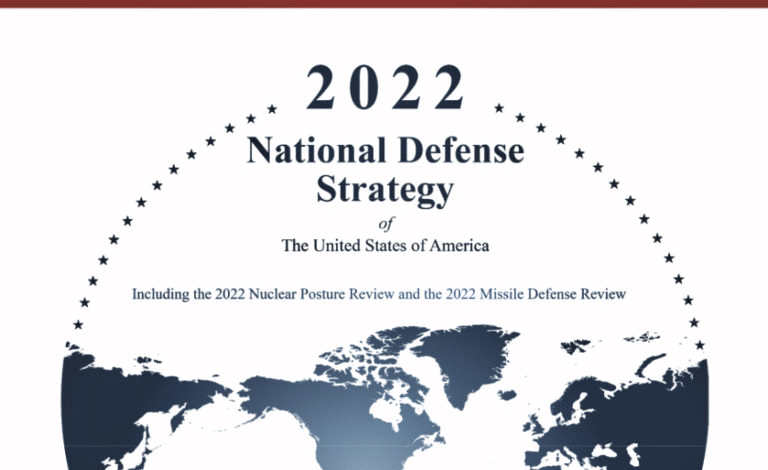U.S. Defense Strategy: Countering China’s Military Pressure

The U.S. Defense Strategy is increasingly focused on countering the growing military pressure from China, particularly concerning critical issues such as Taiwan defense and regional conflicts. During the recent Shangri-La Dialogue, U.S. Defense Secretary Pete Hegseth voiced the commitment of the United States to “fight and win” if deterrence efforts against China fail. This assertion underlines the urgency for Asian allies to bolster military coordination and elevate defense spending to match the escalating threats. With ongoing tensions in global hotspots like Ukraine and Gaza, Hegseth’s call for increased arms sales to Taiwan represents a strategic move to enhance deterrence capabilities against Beijing’s aggressive posturing. The U.S. recognizes that effective deterrence doesn’t come cheaply and requires robust support from its allies to maintain freedom of navigation and avert potential territorial overreach.
Within the realm of national security, the current U.S. military blueprint is deeply intertwined with the necessity to address the implications of China’s growing assertiveness across Asia. As highlighted at the Shangri-La Dialogue, American officials are emphasizing the need for a cohesive alliance with regional partners, aiming to fortify defense frameworks in response to possible confrontations, particularly in the Taiwan Strait. Enhancements in arms provisions intended for Taiwanese defense systems are a vital aspect of this strategy, reinforcing the notion that the U.S. is committed to balancing power dynamics in the region. The concerns surrounding regional stability are further exacerbated by Beijing’s militaristic approach to territorial claims, prompting a recalibration of defense initiatives. In light of these developments, the overarching U.S. policy is not only about deterrence but also about ensuring lasting regional stability amid ongoing geopolitical tensions.
The U.S. Defense Strategy Against Growing Chinese Military Pressure
In light of escalating tensions in the Asia-Pacific, the U.S. defense strategy has pivoted towards countering China’s military pressure, particularly in the South China Sea and around Taiwan. Defense Secretary Pete Hegseth’s insistence on readiness to ‘fight and win’ underscores a resolve to engage militarily to uphold democracy and deter aggression. This shift not only responds to the immediate threats posed by China’s assertive military posture but also signals a commitment to preserving regional stability and freedom of navigation in crucial global trade routes.
The integrated U.S. defense strategy aims to enhance the operational capabilities of Asian allies through increased military coordination and heightened defense spending. As regional conflicts persist, the necessity for effective deterrence efforts becomes paramount. Strengthened partnerships with nations directly affected by Chinese expansionism, such as Taiwan, are essential, not just for bilateral security undertakings but for a unified front against any potential aggression that seeks to alter the status quo.
Frequently Asked Questions
What is the significance of U.S. Defense Strategy in countering China’s military pressure?
The U.S. Defense Strategy is crucial in countering China’s military pressure, particularly in the South China Sea and around Taiwan. It emphasizes deterrence efforts and enhances military coordination among Asian allies, ensuring that the U.S. is prepared to respond effectively to any aggression. This strategy is vital for maintaining security and stability in the region.
How does U.S. Defense Strategy affect arms sales to Taiwan?
U.S. Defense Strategy includes increasing arms sales to Taiwan as a key component to bolster its defenses against China’s military pressure. By focusing on cost-effective military systems, the U.S. aims to provide Taiwan with the necessary tools for self-defense, thereby contributing to regional stability and deterring potential aggression from Beijing.
What role do regional conflicts play in shaping U.S. Defense Strategy?
Regional conflicts, such as Russia’s war in Ukraine and tensions in Gaza, significantly impact U.S. Defense Strategy. These events highlight the need for robust deterrence efforts and increased defense spending, influencing how the U.S. responds to challenges posed by nations like China and ensuring that it remains prepared for diverse military engagements.
How does U.S. Defense Secretary Hegseth’s statement reflect U.S. deterrence efforts?
U.S. Defense Secretary Hegseth’s statement underscores the commitment to deterrence efforts against China, emphasizing the importance of military preparedness and increased coordination with allies. His remarks about the necessity of defense spending reflect a proactive stance to address evolving threats in the region, thereby solidifying the U.S. position as a key player in Asian security.
What implications do China’s military actions have for U.S. Defense Strategy in Asia?
China’s military actions, particularly in the South China Sea and their claims over Taiwan, directly impact U.S. Defense Strategy in Asia. The U.S. is committed to countering these actions through strengthened alliances, increased arms sales to Taiwan, and a focused approach to deterrence, which aims to prevent any attempts by China to alter the status quo in the region.
| Key Points | Details |
|---|---|
| U.S. Preparedness | U.S. Defense Secretary Pete Hegseth emphasized readiness to ‘fight and win’ against China if deterrence fails. |
| Military Coordination | Hegseth urged Asian allies to enhance military collaboration and increase their defense budgets. |
| China’s Military Pressure | Concerns were raised about China’s military actions in the South China Sea and Taiwan, aiming to change the regional status quo. |
| Significance of Defense Spending | Hegseth stressed the need for defense budgets to match existing threats, stating ‘deterrence doesn’t come cheaply’. |
| Taiwan Arms Sales | The U.S. plans to increase arms sales to Taiwan, focusing on cost-effective defense capabilities amid Chinese military pressure. |
| China’s Absence at Dialogue | The absence of China’s Defense Minister at the Shangri-La Dialogue indicates a shift in diplomatic relations. |
| Future U.S.-China Military Engagements | Hegseth’s comments reflect concerns about escalating military engagements between the U.S. and China. |
Summary
U.S. Defense Strategy is increasingly focused on addressing the rising threats posed by China, particularly in the context of military preparedness and regional alliances. During recent discussions, Defense Secretary Pete Hegseth highlighted America’s readiness to engage if necessary, while calling for greater military coordination and defense spending among allies. The emphasis on bolstering Taiwan’s defenses further underscores a strategic shift towards countering China’s influence in the Asia-Pacific region. As tensions rise, the U.S. aims to enhance its defense capabilities and maintain freedom of navigation, ensuring regional stability amid ongoing challenges.




